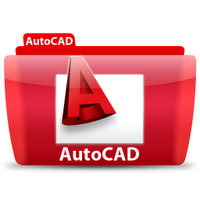The Role Of CAD and CAM Technology In Creating A New Product

Every new product that enters the marketplace starts with an idea. It might not be a startlingly original idea. It might be – and frequently is – a new take or update on a side-step on the design of an already existing product.
It might be truly original of course but, whether you’re reinventing the wheel or breaking genuinely new ground, that idea has to be refined, solidified and thoroughly tested before it can be successfully released into the market.
There are various other parts of the process that need to be addressed. Good market research is important in assessing whether there is a demand for your product in the first place, and to check what potential rivals are already producing.
There may be legal and cash flow issues to deal with before launching the product development process. Later will come the manufacturing and marketing, but in between the original idea and the product hitting the market, design is arguably the most crucial stage.
CAD or computer-aided design software is now embraced by designers working in a wide range of fields and industries. The very start of the design process still often starts with the sweep of a pen over paper – whether it’s in the form of an architect’s preliminary sketches or the first step of a an idea’s transition from a fashion designer’s mind to the catwalks and high streets.
When it comes to refining and solidifying that idea into something more concrete (sometimes quite literally in the case of civil engineering projects), CAD software can be invaluable.
2D CAD drawings can be helpful in creating floorplans, blueprints, schematics and general design ideas. 3D CAD, meanwhile, can be used to create solid design models with perfect precision. These models can be rotated, viewed from any angle and even ‘flown through’ for an interior view.
![]()
Solidworks Software from NT CADCAM incorporates both 2D and 3D CAD programs but the process needn’t stop at design. The designs themselves can be tested and verified, with virtual simulations reducing the need for expensive physical prototypes.
Beyond that, computer-aided manufacturing (CAM) systems take designs to the production floor, allowing production engineers to convert “art to part” in a seamless process.
Whether any individual product succeeds or fails will depend on a host of different factors. By making sure the design process is as flawless and productive as possible however, you’ll have given that product the best possible start.
